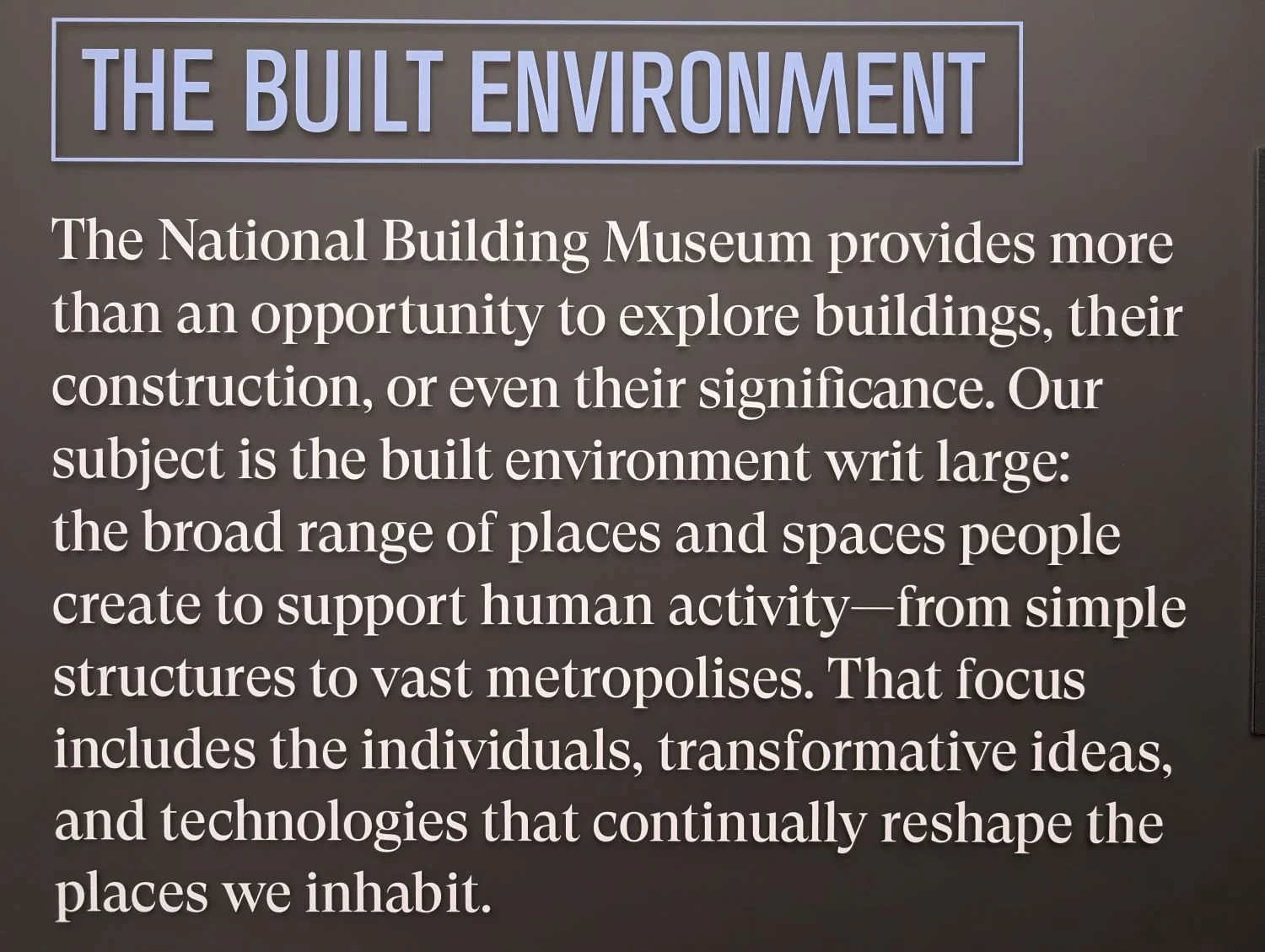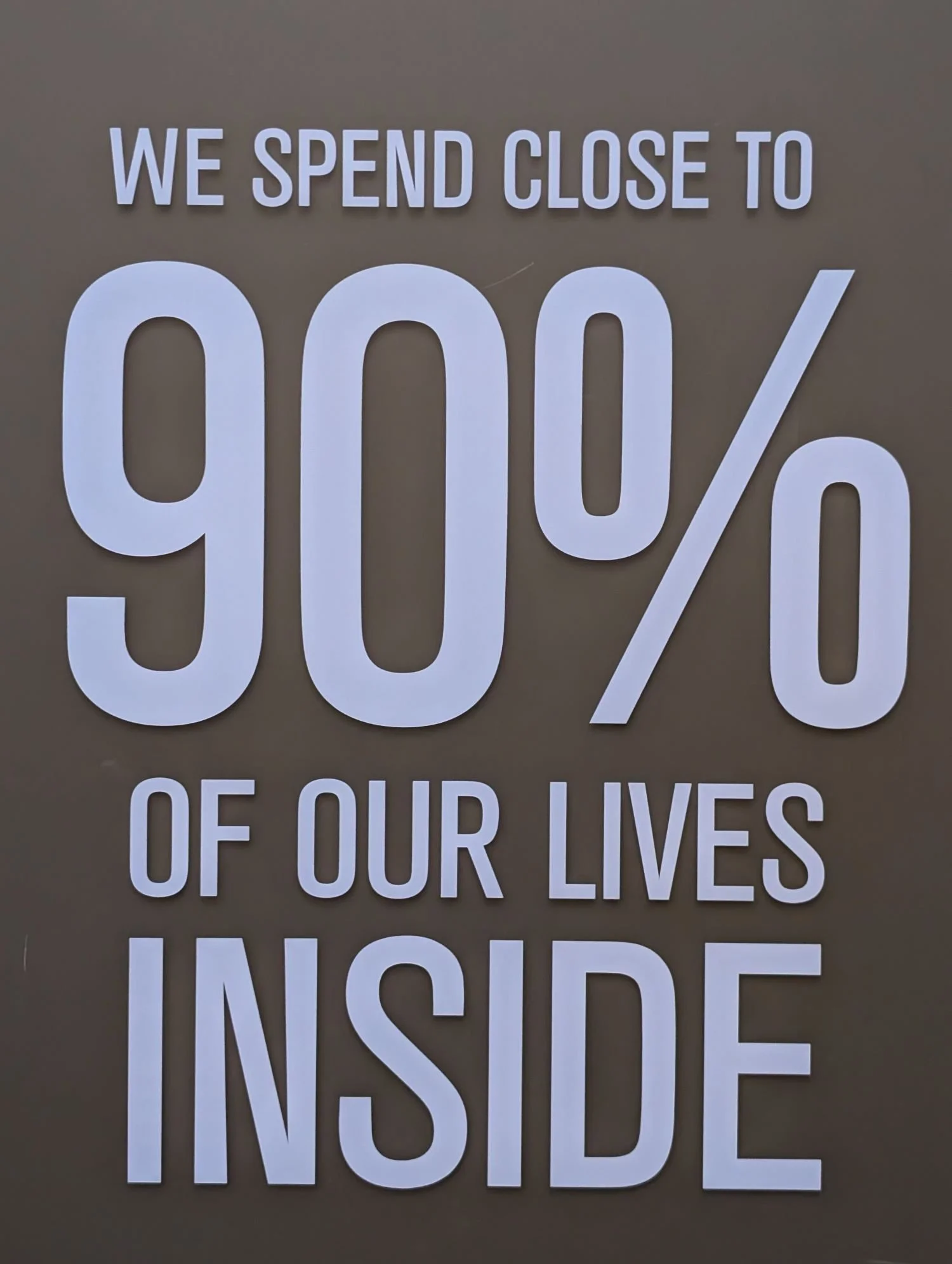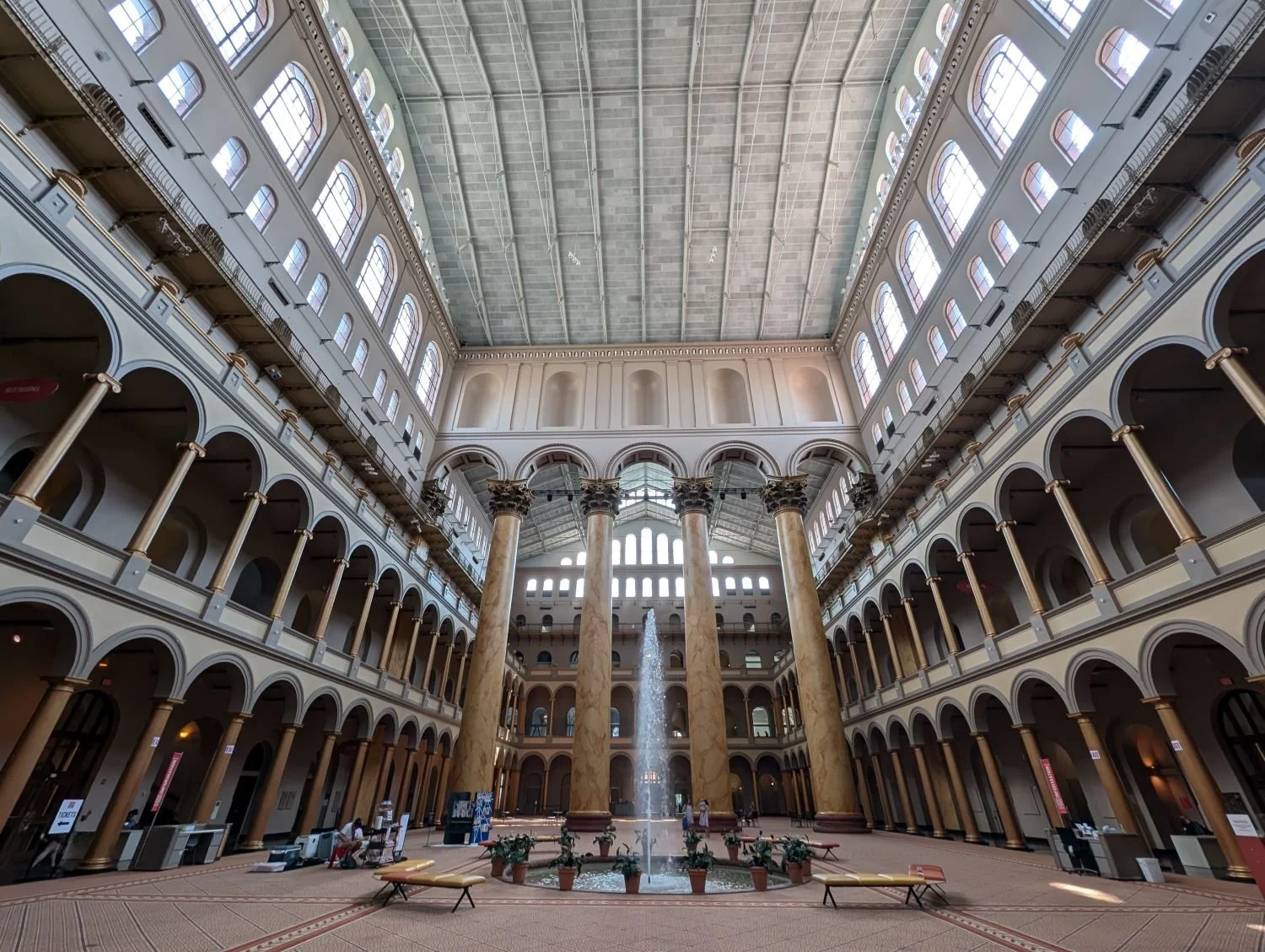What Does a Place Do?
My First Visit to the Buildings Museum
Of course, I didn’t know I was going to have a year of writing about place before I visited, but it worked out that I hadn’t gone yet. The National Building Museum couldn’t have been a better place for this year.
Right away, I knew I was with my people. Entering, I found these statements.
The Built Environment
But let me show you the entrance.
It recalls to me the importance of place and one of the most consistently enlightening books I’ve ever read. Space and Place by Yi-Fu Tuan found me in my 1888 Center era (also here), my time as a place-maker. Someone who understood our goal recommended this book to us during an open-house event. It has morphed my thinking since. Every time I say that a place educates you on how to be there, it is the echo of this book.
Architectural space reveals and instructs. How does it instruct? In the Middle Ages a great cathedral instructs on several levels. There is the direct appeal to the sense, to feeling and the subconscious mind. The building’s centrality and commanding presence are immediately registered. Here is mass -- the weight of stone and of authority -- and yet the towers soar. These are not self-conscious and retrospective interpretations; they are the response of the body (Tuan, 1977, p. 114)
He comes back to this a page later to add:
The modern built environment even maintains a teaching function: its signs and posters inform and expostulate. Architecture continues to exert a direct impact on the senses and feeling. The body responds, as it always does, to such basic features of design as enclosure and exposure, verticality and horizontality, mass, volume, interior spaciousness, and light. Architects, with the help of technology continue to enlarge the range of human spatial consciousness by creating new forms or by remaking old ones at a scale hitherto untried (Tuan, 1977, p. 116)
I also love his use of language. Never have I considered the balance of enclosure and exposure before reading this.
I admit there is a sense of stating the obvious here. Much of this seems intuitive. Big buildings stand out; good places are nice. But at the same time, it is easy to ignore the importance of things seen everyday, like a building. But pausing now, I have a closer sense of what it means to be in a place.
I think this lesson was less obvious before and was made clear to many during COVID-19 lockdowns. Along with many parts of normal life being disrupted, suddenly just how comfortable your home was became very important. I remember the thought of having dodged a bullet by moving to Boston instead of New York then and living in a classic New York “is this a shoe box or a closet” style apartment. Those types of places assume that one can go somewhere else to get the space they need. Claustrophobia might be defined as too much place and not enough space. Our bodies respond to its environment at times somewhere on the irritated-relaxed scale to gauge our environmental cohesion.
(Actually, this is why I will always prioritize living in an older building. Old buildings still feel like places for people, showing more signs of craft and personality, and not the economically-optimized dorm rooms for adults of today. Today’s apartment building is no different than today’s office building. It seems to me that all new buildings, residential and commercial, have the same doors and windows. There’s that weird L-shaped chrome bar door handle that hooks down from the top and the gray color swatches peppered with a vibrant pastel orange or green. It’s depressing, honestly. Surely, in our age of abundance, we can do better.)
And so I am standing there in this room. When I see this large place, noticing the water fountain endlessly jumping for the ceiling, and following the massive columns up, I am lifted. I see more, and I feel my spirits rise. This designed place instructs me, it moves me, to feel larger. My sense of self expands. My breathing changes, I feel calm, and I look farther into a building than I normally am allowed.
Frank Lloyd Wright
I was taking my small steps, giving myself time in wonderment, when I arrived at one of the exhibitions: a spotlight on the legendary Frank Lloyd Wright’s time in Southwestern Pennsylvania. There he would construct his masterpiece, a now-listed UNESCO heritage site, “Fallingwater.” This is surely the first place associated with his name, and people likely know the place better than the name of the person who made it. It’s entirely stunning.
I’ve seen photos of this house basically since I was exposed to art. It’s an icon and feat of human creativity, but then it is also something more. Revisiting this house as an adult with a sense of place, a desire for a comfortable living setup, and a healthy anger for today’s cost of living, it all occurred to me: it’s a house. This is someone’s house. This is the place where they perch their lives to imagine what the rest of it could look like. They build their daily days here.
When I think of how a place instructs someone, I can’t help but also feel a sense of disappointment (and jealousy, frankly) that perhaps this place was misused. Did they pursue serious problems of humanity in these amazing walls? Were the owners artistic? Or were they just there being rich?
Seeing this exhibition exposed a hidden belief of mine. Part of what comes with the territory of a beautiful place is a worthy sense of usage, a sense of purpose deployed from the incredible place. All the same, would I, if this were my home, feel the same way? Aren’t I already desiring a beautiful place to chill in and just be?
Fallingwater was a project fully realized, but the others in the show were not. I did not know that Wright had other Pennsylvania plans in Pittsburgh in what was referred to as the revival. He had a dream of a civic center, gorgeous and spacious in its layers. The 3D renditions of what it could look like appeared, again, somehow futuristic and local. As his style, it was reminiscent of the Guggenheim Museum in New York.
I find that places offer an opportunity to dream, to show a vision. Everyone is capable of vision; telling it is the dulled or sharpened skill that makes it seem like some have or don’t have it. Wright had it. Surely, place is a canvas for our dreams. The home that is also Fallingwater, this unrealized civic center, and the other pieces in the show all hint to what could be. These places are dreams soon to be seen -- or not, in some cases.
What then is a place if not a host for our biggest thoughts, our deepest emotions?
If I wander back toward the original question for this year’s theme of places, “why do some places make me feel awesome?” here, so far, I might be able to answer it as such: because they allow it.
Trevor
Now-reading affiliate links:




